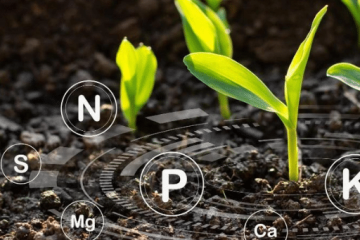Ammonium sulphate fertilizer is a widely utilized agricultural input renowned for its role in enhancing soil fertility and improving crop yields. Composed of nitrogen and sulfur, two essential nutrients for plant growth, this fertilizer addresses nutrient deficiencies while promoting robust crop development. Whether used in large-scale farming operations or smaller horticultural settings, ammonium sulphate offers targeted solutions to meet the demands of modern agriculture. In this article, we will explore the key benefits of ammonium sulphate, its practical applications, and why it continues to be a crucial tool for farmers and agricultural professionals aiming to optimize productivity and sustainability in their practices.
Understanding Ammonium Sulphate
What is Ammonium Sulphate?
The ammonium sulfate (chemical formula (NH₄)₂SO₄) is an inorganic salt that is applied as a fertilizer by way of nitrogen in agriculture. Ammonium sulfate constitutes the two nutrients that are vital for plant growth-nitrogen, which increases leaves and stems, and sulfur, which is required to synthesize proteins and enzymes. Usually, this compound is found as a crystalline solid or granular for application, and due to its high solubility, it can be quickly applied to soil and dissolved in water for easy nutrient delivery.
The primary function of ammonium sulfate in crop production is to correct nitrogen and sulfur deficiencies in soils. It particularly supports the crops that require sulfur in their environment, such as canola and some legumes. Then it increases the acidification of the soils, thus becoming a useful advantage in areas with alkaline soils. By reducing soil pH, ammonium sulfate dissolves the stored nutrients, and crops can absorb them easily from the soil.
Ammonium sulfate works on compatibility with the sharpness of any farming technique, whether directly applied to soil or added to fertilizer mixtures. In addition to nutrient supply, ammonium sulfate helps to enhance the general soil structure by encouraging microbial activity. Should ammonium sulfate be employed judiciously, it accomplishes high crop yields and preserves sustainable agriculture; otherwise, the opposite is true, i.e., it makes the soil highly acidic on over-application.
Chemical Composition and Properties
Ammonium sulfate (chemical formula (NH₄)₂SO₄) is an inorganic salt recognized as a nitrogen-rich fertilizer. It consists of 21% nitrogen in an ammonium form and 24% sulfur in a sulfate form, making it a fertilizer supplying two groups of nutrients essential to the growth of plants. The compound is highly soluble in water, providing for efficient application of the fertilizer and fast availability of nutrients to the crops.
One of the significant characteristics of ammonium sulfate is that it lowers soil pH levels because ammonium gets converted into nitrate through microbial action. The process releases hydrogen ions that reduce the soil pH. This property is beneficial for soils that are alkaline since it maintains the pH levels and the use of nutrients. In soils that are prone to acidity, however, this can be a problem and should be used carefully.
The physical nature of ammonium sulfate in terms of its crystalline structure and resistance to caking makes it excellent for storage and transport. Besides, it is compatible with several other fertilizers with which it can be blended in complex mixtures designed for a crop’s specific needs. These features have placed ammonium sulfate at the core of contemporary agriculture to ensure efficient and sustainable food production.
How Ammonium Sulphate is Produced
Ammonium sulfate is ordinarily created by the reaction of ammonia and sulfuric acid. This reaction forms crystals of ammonium sulfate that are then separated from the mother liquor, dried, and packed for use. The reaction itself is more or less simple and efficient, so the yield remains high. At the industrial scale, maximum production is pursued while meeting stringent environmental and safety standards.
Another means of making ammonium sulfate involves capturing it as a by-product from industrial processes such as the production of caprolactam, which finds its use in making nylon. This also provides an alternative way to put waste materials to use, satisfying the criteria of a sustainable chemistry concept. Recovery of ammonium sulfate thereby lowers environmental pollution created by these industrial processes and fulfils the need for fertilizers from the crop-growing industry.
Because impurities affect the efficiency of ammonium sulfate, quality control becomes an essential part of its production. Manufacturers often employ the best filtration and crystallization techniques to ensure we get an ammonium sulfate of high purity. With intensive control maintained throughout the production, manufacturers ensure consistency in the product so that it conforms to all standards and requirements of modern agriculture.
Primary Uses of Ammonium Sulphate in Agriculture
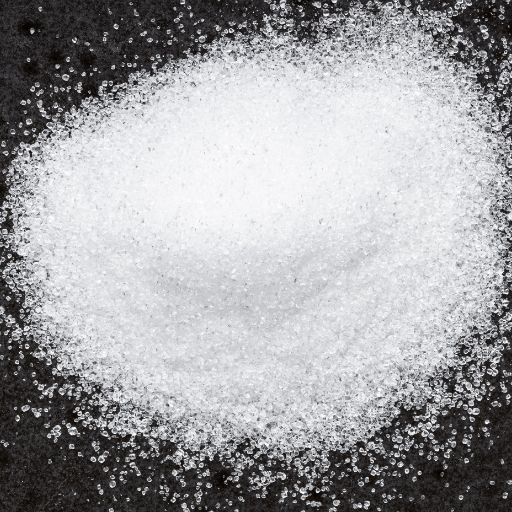
Role of Ammonium in Plant Nutrition
Because of its special characteristics, ammonium represents a vital factor in plant nutrition since it may be absorbed and metabolized directly by plants. Nitrogen has often been described as an essential element required for various growth activities, and ammonium represents one of its essential sources. Some of the ways ammonium supports plant nutrition are:
- Nitrogen Source for Chlorophyll Production: In ammonium, nitrogen is one of the supporting factors for building chlorophyll molecules that are necessary for photosynthesis. Chlorophyll empowers plants to convert sunlight into energy that allows growth and development.
- Protein Synthesis and Enzyme Activity: Nitrogen from ammonium is used to build amino acids that are used as building blocks of proteins. These proteins are employed for enzyme functions as well as in the cellular matrix, metabolism, etc., in plants.
- Better Root Growth: Along with nitrogen supplied for uptake and utilization, according to several reports, root development and branching are promoted by ammonium nitrogen, so that plants are better able to bring up water and nutrients in needs.
- pH Regulation in the Rhizosphere: The absorption of ammonium causes acidification of the rhizosphere, which favors the availability of other nutrients like phosphorus and micronutrients.
- Enhances Rapid Growth and Yield: Since ammonium nitrogen is readily taken up, it allows rapid vegetative growth and enhances yields in crops with heavy nitrogen demands, such as corn, cotton, and leafy vegetables.
When ammonium availability in the soil is ensured, full nutrient management can be achieved, ensuring healthy crops and sustainable agricultural practices.
Specific Crop Uses
- Corn Production: Ammonium nitrogen graces corn production due to its ability to promote vigorous vegetative growth and kernel formation. Fertilizers containing ammonium-based tend to increase the efficiency with which corn takes up N by as much as 30%, primarily when applied early in the development stages. This application, in turn, would lead to higher biomass and yield outputs, underscoring the necessity of this nutrient for high-requiring crops such as corn. Precision placement of fertilizers using methods like sub-surface banding will further help in reducing N losses occasioned by volatilization and denitrification.
- Wheat and Barley: Ammonium nitrogen is an important nutrient for cereal crops like wheat and barley, acting during the tillering and grain development stages. Studies have shown that ammonium-dominant fertilizers mix with gradual nitrate release to sustain the availability of nutrients throughout crop growth. Moreover, it has been immensely helpful in enhancing protein content in wheat grain by providing a constant nitrogen supply.
- Leafy Vegetables: Rapid nutrient uptake shows spinach, lettuce, and kale to be crops for which the maintenance of lush green foliage by ammonium nitrogen is crucial for marketing. Controlled sources of ammonium could also potentially reduce nitrate buildup, a major concern in leafy vegetables from a health perspective for consumers. Ammonium fertilization under precision irrigation has been shown to optimize growth rate and reduce environmental runoff.
- Rice Cultivation: In paddy fields, ammonium-nitrogen is considered more suitable because the waterlogged conditions reduce N-volatilization. Its availability under anaerobic conditions ensures that the roots can absorb it over time, thereby improving tillering, panicle initiation, and grain filling. The combined application of ammonium nutrients and organic agents is gaining importance with respect to sustaining soil fertility in rice-growing areas.
- Fruit Trees: Perennial crops such as citrus and apple trees stand to gain the most from ammonium nitrogen during active growth phases. The literature proves that ammonium fertilization in split applications provides the best solution of nitrogen leaching; thus, it enables proper foliar growth and intensifies fruit size and quality in accordance with intensive orchard management.
By custom-making ammonium nitrogen applications to suit the crop types and their growth need, agricultural productivity can be brought to the highest level while checking environmental degradation. In addition to site-specific nutrient management and remote sensing technology, more tools can be incorporated into fine-tuning nitrogen application strategies for varied cropping systems.
Benefits of Using Ammonium Sulphate Fertilizer
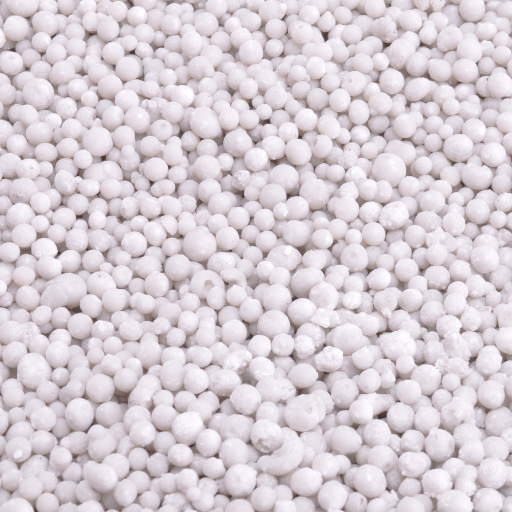
Enhanced Crop Growth and Yield
Both nitrogen and sulfur are requisite nutrients that ammonium sulfate fertilizers supply reliably for almost all plant growth: nitrogen constitutes chlorophyll, amino acids, and proteins related to photosynthesis and plant life; sulfur enters synthesis for important enzymes and vitamins, thus helping with overall plant metabolism. Hence, having these needed nutrients readily available during critical time stages of crop growth enables them to display drastic and consistent improvement in yields with ammonium sulfate.
Numerous field trials have shown that ammonium sulfate positively affects crop yield, especially in sulfur-deficient soils. For instance, it has been reported that the application of sulfur increases the protein content of wheat as well as the oil content of oilseed crops like canola and soybean. Further, ammonium sulfate, when applied in small and specific quantities appropriate to a given crop, decreases nutrient leaching and maximizes absorption into plant roots. Thus, as a result of more uniform plant growth, there is better enhanced resistance to stress from the environment, and execution will attune to the higher quality needed by commercial farming operations that seek to maximize market returns.
In addition, ammonium sulfate benefits sustainable agriculture by supporting balanced nutrient management systems. It differs from urea-based fertilizers in that it has very few nitrogen volatilization losses, so nitrogen use efficiency is better. On the other hand, it also creates a slight acidification of the soil, which is beneficial in alkaline soils as it increases the availability of phosphorus and micronutrients to plants. Through these cumulative benefits, ammonium sulfate not only unlocks crop growth and yields but also builds soil for winning agricultural production in the longer run and hence becomes strategically important in agricultural programs of today.
Improvement of Soil Quality
Thus, ammonium sulfate enhances the soil quality through the balancing of nutrient deficiencies and favorable soil chemistry. It supplies plants with nitrogen and sulfur, two major nutrients required by plants for optimum growth. A very important advantage of this fertilizer is that ammonium nitrogen, principally in an ammoniacal form, is less susceptible to leaching as compared to nitrate nitrogen, thus reducing losses to the environment and ensuring nutrient availability to the root zone.
On the other hand, sulfur helps in the synthesis of amino acids and proteins. Hence, its availability directly affects plant health and crop quality. Sulfur application has been found in some studies to result in noticeable improvement in biomass production and yield consistency, especially in sulfur-poor soils. Meanwhile, ammonium sulfate lowers pH in alkaline or calcareous soils through acidification, which in turn causes the release of phosphorus and micronutrients like zinc, iron, and manganese into the soil solution so that plants may better absorb them.
When included in balanced fertilization programs, ammonium sulfate helps further improve microbial activity and soil structure and prevent the depletion of nutrient reserves over consecutive growing seasons. The prerequisite benefits are buttressed by the importance of the fertilizer in sustainable agricultural farming systems, ensuring the fertilization, thus productivity, of soils in the long term.
Cost-Effectiveness Compared to Other Fertilizers
Ammonium sulfate is cheaper mainly because it provides two nutrients (nitrogen and sulfur); it is also highly soluble and fairly good at modifying soil pH, while urea is cheap but has nitrogen loss problems, and NPK fertilizers meet the criteria for balanced nutrients but are without intended benefits.
|
Fertilizer |
Cost |
Nutrient |
Solubility |
pH Effect |
Nitrogen Loss |
|---|---|---|---|---|---|
|
Ammonium Sulfate |
Moderate |
N, S |
High |
Acidifies |
Low |
|
Urea |
Low |
N |
Moderate |
Neutral |
High |
|
NPK Fertilizer |
High |
N, P, K |
Moderate |
Neutral |
Moderate |
Application Methods for Optimal Results
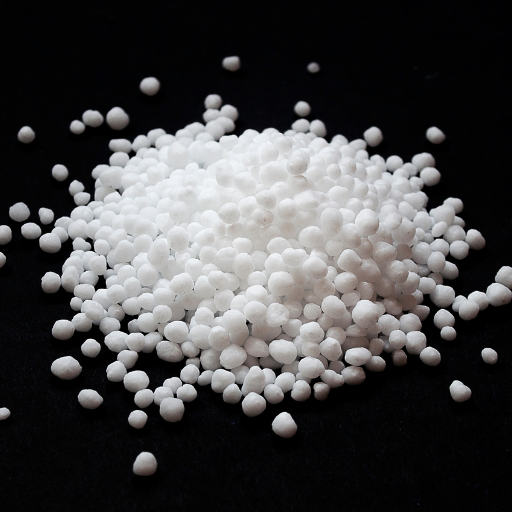
Best Practices for Application
In order to achieve the best results from fertilizers, specific application methods are necessary. Broadcasting is recommended for large, uniform areas to guarantee equal distribution of nutrients. However, this should usually be followed by incorporation to reduce nutrient loss, which is especially true when high-volatility fertilizer types such as urea are used. In cases where crops require special treatment, band placement or side-dressing is most suitable as it places the fertilizer directly within the root zone for higher efficiency and uptake.
Applying nutrients at the correct time, corresponding to the plant’s growth stage, would allow maximum nutrient uptake. To elucidate, nitrogen fertilizers should be applied during the active vegetative period when the atmosphere is in demand for fast growth. Soil moisture is also a critical factor to consider; fertilizing dry soils may increase nutrient loss due to less microbial activity and volatilization. On the other hand, newer methods like fertigation, integrating fertilizers with irrigation water, allow for even more diversified and precise application, eliminating fertilizer wastes and limiting environmental hazards.
Regular testing of the soils is very important to identify nutrient deficiencies and potentially prevent over-fertilization, which is generally detrimental to the environment. When these are combined with proper storage and handling, such as avoiding prolonged exposure to moisture, fertilizer quality is maintained, which would consequently enhance agricultural productivity to the optimum.
Timing and Frequency of Application
Timing fertilizer application and its frequency have to be considered while ensuring nutrient uptake and minimizing wastage of resources. Fertilizers should be applied according to the stages in the growth of crops because the nutrient demands of plants tend to differ at every stage of life. For example, during their vegetative growth phase, nitrogen is required in large amounts, whereas during flowering and fruiting, potassium and phosphorus are essential.
To increase nutrient use efficiency, split applications may be employed. Splitting the total fertilizer requirement into several smaller doses enables farmers to match the availability of nutrients with the demand of the crops, thereby curbing runoff and leaching losses. For example, nitrogen can be applied to cereals like wheat at three stages: at planting, tillering, and heading. This aims at maximizing yield potential. Slow- or controlled-release fertilizers can similarly extend nutrient release and thus decrease the frequency of application in some cases.
Integration of soil moisture and weather data is regularly applied in determining application schedules. Application must precede rainfall or irrigation to take advantage of the nutrients being carried into the root zone. But we would not want too much rain so as to wash nutrients below the root zone through leaching. Further, crop nutrient demands can be reviewed annually or seasonally on the basis of soil test results to inform precise times for application with the greatest benefit. The application and performance of fertilizer can also be made more precise and efficient with assistance from GPS-guided spreaders or automated fertigation systems.
Reducing Volatilization Risks
Volatilization of nitrogen in the form of ammonia gas into the atmosphere entails serious problems concerning the efficiency of nitrogenous fertilizers. It is all the more common when urea fertilizer is topdressed onto the soil surface with a high soil pH, warm temperature, and low soil moisture conditions. In counteracting this risk, mixing fertilizers with the soil immediately after topdressing is among the best ways for it. Some means of shallow incorporation or irrigation promote nitrogen retention by increasing the generation of contact between fertilizer and soil and thus reducing volatilization.
Another important method to prevent volatilization is the use of urease inhibitors. The chemical additives temporarily hinder the enzymatic transformation of urea into ammonia, so the nitrogen has some time to get adsorbed into the soil before volatilizing. NBPT, for example, is one compound known to effectively reduce ammonia emissions arising from urea fertilizers. Integrating such stabilizers in fertilization programs will help in enhancing nitrogen use efficiency and reducing environmental impact through atmospheric nitrogen losses.
Similarly, advanced technologies of precision agriculture can be employed in the management of volatilization. GPS-guided application systems can put fertilizer exactly where crop roots can access nutrients, thereby limiting surface exposure. On the other hand, VRT allows fertilizer application rates to be modified depending on field-specific conditions, which reduces User-rated surface nitrogen that has the potential to volatilize during adverse conditions. When supplemented with such techniques for data-driven decision-making approaches, farmers stand to experience a considerable reduction in volatilization risks with a great enhancement in crop yield and sustainability.
Environmental Impact of Ammonium Sulphate Fertilizer
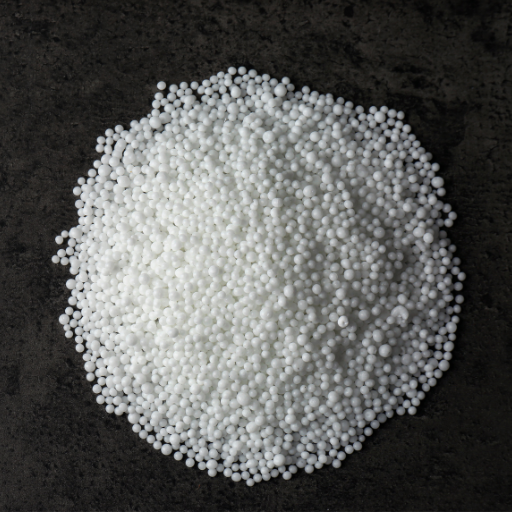
Potential Risks and Mitigation Strategies
I always tend to identify any vulnerabilities that could threaten project objectives, proper operational conduct, or security. On the other hand, technological failures pose great threats, including system crashes, data losses, or simple incompatibilities. Hence, I enforce the strongest of backup procedures, maintain systems properly, and keep both software and hardware up-to-date. Lastly, I implement redundant systems and failover mechanisms to keep downtime levels to a minimum so as to further operational resilience.
Another big scare pertains to mistakes by human beings, ranging from improper communication to inappropriate procedures to lack of adequate training. In trying to thwart these risks, the focus lies on clear documentation, clear lines of communication, and adequate training programs based on team requirements. The team is also encouraged to be responsible, and those measures should be backed by quality control to ensure that activities are well-performed and consistent.
Lastly, any risk factors from the outside world, such as environmental disruptions and regulatory changes, must be handled with a proactive approach. Thus, I keep myself informed on relevant policies and trends within the industry environment so that any immediate adjustments may be effected if necessary. I consider contingency plans and regular risk assessments, which are based on foreseen problems and how I can handle them. Strategically managing these areas will ensure the sustainability of operations with minimum disruptions, both short-term and long-term.
Sustainability Considerations
Sustainability considerations are crucial to ensure operational viability while minimizing environmental impact. Some strategies can be energy efficiency, waste minimization, or responsible material acquisition. Using clean energy, be it solar or wind, reduces companies’ carbon footprints while providing for long-term savings. In addition, using recycled or environmentally-friendly raw materials complies with established environmental standards while conferring benefits to nature in general. Such undertakings mean that companies periodically assess their supply chains and operational processes to identify opportunities for imposing or enhancing sustainable practices.
Data-based decision-making is a very critical part of sustainability as it tracks resource consumption, emissions, or waste generation-related KPIs. For instance, real-time IoT or advanced analytical tools may give insight into energy use over time, highlighting system inefficiencies and thus triggering corrective actions. Also, lifecycle assessments of a product would consider environmentally impacting factors from production, disposal, or recycling so that improvements to processes can be well-informed.
Finally are corporate culture and sustainability for to anything being truly sustainable in the long term. Getting all stakeholders, including employees, suppliers, and customers, to embrace the goal of environmental protection means embracing responsibility together and committing to the cause at all levels. This might involve training programs for everyone involved that emphasize the importance of eco-friendly measures as well as transparent reporting of achievements and benchmarks. Compliance also facilitates greater leadership by the organizations within their industries in sustainability promotion.
References
Frequently Asked Questions (FAQ)
Q: What is ammonium sulphate fertilizer?
A: Ammonium sulphate fertilizer is a type of inorganic fertilizer that contains nitrogen in the form of ammonium and sulphur in the form of sulfate. It is commonly used to promote plant growth and improve soil fertility.
Q: How does ammonium sulphate fertilizer benefit plants?
A: Ammonium sulphate fertilizer provides essential nutrients, particularly nitrogen and sulfur, which are crucial for plant development. Nitrogen aids in the formation of chlorophyll, while sulfur is important for protein synthesis and enzyme function.
Q: When is the best time to apply ammonium sulphate fertilizer?
A: The best time to apply ammonium sulphate fertilizer is during the growing season, typically in early spring or during the active growth phase of plants. It can also be applied during planting to give crops an initial nutrient boost.
Q: Can ammonium sulphate fertilizer be used for all types of plants?
A: Yes, ammonium sulphate fertilizer can be used for a wide variety of plants, including vegetables, fruits, and ornamental flowers. However, it is important to follow specific application rates to avoid over-fertilization, which can harm plants.
Q: What is the recommended application rate for ammonium sulphate fertilizer?
A: The recommended application rate for ammonium sulphate fertilizer typically ranges from 0.5 to 1 pound per 100 square feet, depending on the specific crop and soil conditions. Soil testing is advised to determine the exact needs.
Q: Are there any drawbacks to using ammonium sulphate fertilizer?
A: While ammonium sulphate fertilizer is effective, it can lead to soil acidification over time, especially with excessive use. Additionally, it should be stored properly to prevent moisture absorption, which can degrade its quality.
Q: How does ammonium sulphate fertilizer compare to other nitrogen fertilizers?
A: Ammonium sulphate fertilizer is often compared to other nitrogen fertilizers like urea and calcium nitrate. Unlike urea, ammonium sulfate provides both nitrogen and sulfur, making it a more balanced choice for certain crops.
Q: Is ammonium sulphate fertilizer safe for the environment?
A: When used responsibly and at recommended application rates, ammonium sulphate fertilizer is generally safe for the environment. However, overuse can lead to nutrient runoff, which may impact water quality.
Q: Can I use ammonium sulfate fertilizer in organic gardening?
A: Ammonium sulphate fertilizer is not typically considered organic, as it is a synthetic product. However, some organic gardening practices may allow its use in specific situations, so it’s important to check local organic certification guidelines.


